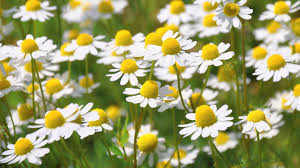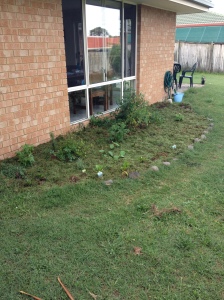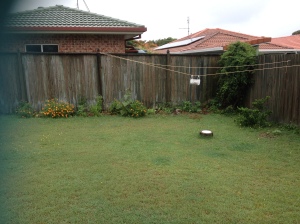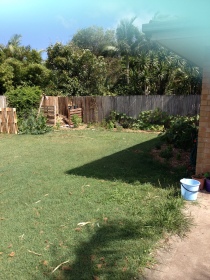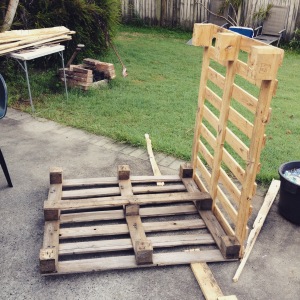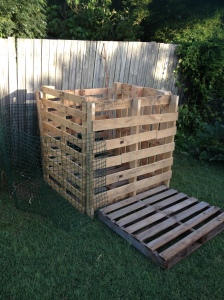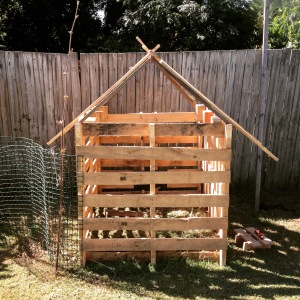I’ve had a couple of people contact me lately that have just begun their gardening journey and it got me thinking about the all the things I learned about planting out a garden bed and how much easier and more productive my first season of growing would have been if I planned that little bit more.
I get that the prospect of planting can be exciting after all the work taken to create the garden bed itself but a take a moment to consider a few things before heading out and buying the first punnet of seedlings you see at Bunnings because at this point a little bit of planning goes a long way. Below I’ve put together a few things to consider before diving in.
1.Keep it simple. Its easy to get excited and try and plant every single vege you love to eat but having patience and starting slow will ensure a lot less hurdles on the road.
2. Consider the season and your climate. What grows best in your climate at this time of the year? What is your climate? Don’t know? Look it up. A quick google search will tell you what you’re climate is and what veges to grow at what time of the year.
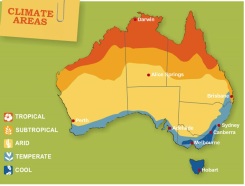
3. Chosen your veges? Now research them a little.
* What are their needs? Full sun, shade? Partial shade? Good Drainage? Make sure your bed is going to meet these needs.
* How long do they take to mature? There is little point planting a cold climate vege that takes 6 weeks to mature at the end of winter
*Are they a suitable variety? Even though the fruit itself may be suitable for your climate not all varieties of that fruit will be. Tomatoes are an excellent example of this and choosing the right variety can mean the difference between lots of tomatoes or no tomatoes.
* What pests and diseases are they susceptible to? Is there anything you need to look out for?
*How long do they produce for? Do they bear fruit all season or is their harvest period quite fast?
4. How much to plant?
Planting a butt-load of stuff in the first week is going to ensure you have HEAPS and then NONE while you wait for the next round to grow. Think about succession planting – that is plant some and then a week or two later, plant some more. This will ensure you have an ongoing supply and you’re not forced to make endless carrot cakes or eggplant curries like myself. In saying this, this idea does depend on how long the crop produces for. With crops such as carrots and beetroots you maybe be able to get a couple of rounds within a season if you’re smart with your timing. Crops such as capsicums, tomatoes and eggplants are long season crops that will bear fruit continuously and then there are some crops such as corn and squash that generally bear fruit at the end of the season. I’ve provided a link at the bottom of the page for extra info on succession planting. Many leafy greens can last whole seasons too if you only harvest the outer leaves as you need and don’t pull the whole plant.
5.How to arrange your planting? Plants from the same family share pests and diseases so keeping them more or less separated is one organic method of fighting against these potential challenges. Again a quick google search will show you the different family groups which looks something like this (link provided below). 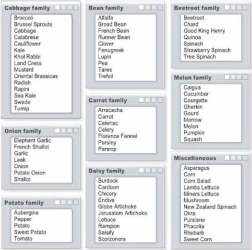
If you’re lacking in space in the garden but you want a few things from the same family you can try inter-planting rows of different families and even explore ‘companion planting‘ by inter-planting rows with plants from different families that help one another. I had to do this with my eggplants and tomatoes. They’re cousins so I planted Basil between the two crops which is an excellent companion plant for both! Link #3 below is an excellent source of information on companion planting. Crop rotation is another organic way of preventing pest and disease and involves changing what you plant in each bed or spot every season. It’s a little more in-depth than just moving them around randomly so it’s perhaps an idea to explore once you’ve got the other basics down pat but I’ll provide a link at the bottom of the page to a site with some great info on it.
6. Seedlings vs. Seeds. Ask the vegetable two questions…Do I have enough time in the season to grow you from seed? And does the plant mind being transplanted if I buy you as a seedling? There are many crops that transplant just fine and by buying seedlings you can significantly shorten the length of time you need to wait till harvest; Tomatoes, Broccoli, cabbage, parsley, Cauliflower, eggplant, celery and the list goes on. Root vegetables tend to do better when they’ve grown from seed such as Carrot, Beetroot but also beans, peas, cucumber and many others prefer being directly sown. Always buy good quality either way, you get what you pay for. Look out for a future blog specifically on seeds
7. Last but not least. MULCH MULCH MULCH. Protect your soil as healthy soil is the key to healthy strong plants. Soil should not be left uncovered…if you’re planting fine seeds that need light to germinate, leave small strips uncovered only and keep up the water like I’ve done in the pictures above and as the plant grows you can top up the mulch as you need. Mulching like the other topics can go further in depth and there will be a post dedicated just to this but this post is about basics so if you’ve bought seedlings to plant but haven’t got any mulch, get yourself down to your nearest garden centre straight away.
If this all seems overwhelming for you fear not – go back to rule one, keep it simple and have fun, it doesn’t have to be serious business. This guide aims to get you sustainably growing and eating your own veges all seasonS…Maybe this season you wont think too much about whats planted next to what and you may end up with Broccoli that wont grow a head or with a ridiculous amount of carrots but that just means all the more for sharing. You’ll win some and you’ll lose some but you’ll only continue to learn and next season your crops will be bigger, healthier and tastier!
Reference List
- http://growyourownfoods.blogspot.com.au/2016/07/cold-climate-zone-planting-times-for.html
- https://en.wikipedia.org/wiki/Succession_planting
- http://www.sgaonline.org.au/companion-planting/
- https://sites.google.com/site/knowyourvegetables/about-vegetable-families/onion-family
- http://www.sgaonline.org.au/crop-rotation/
